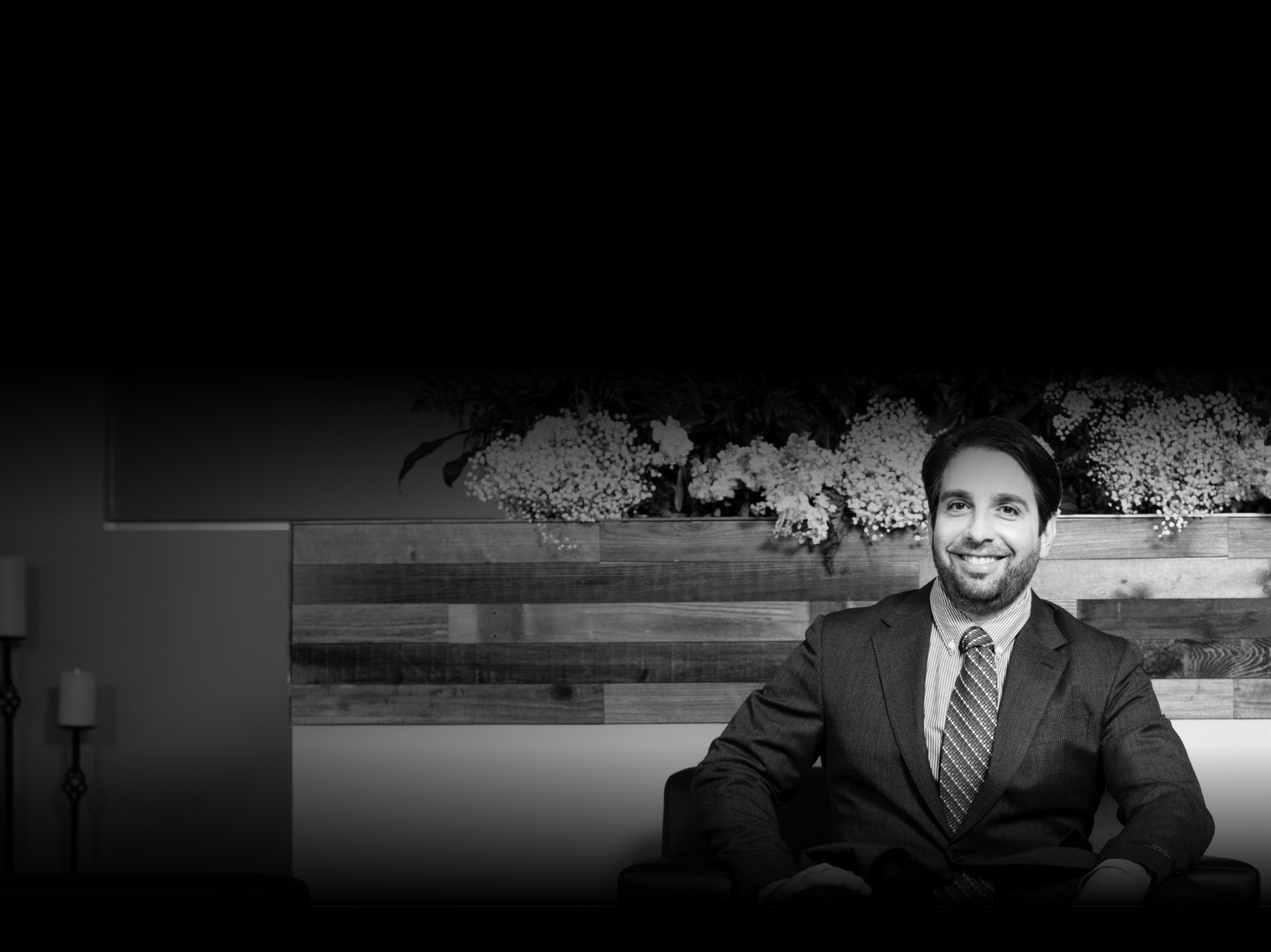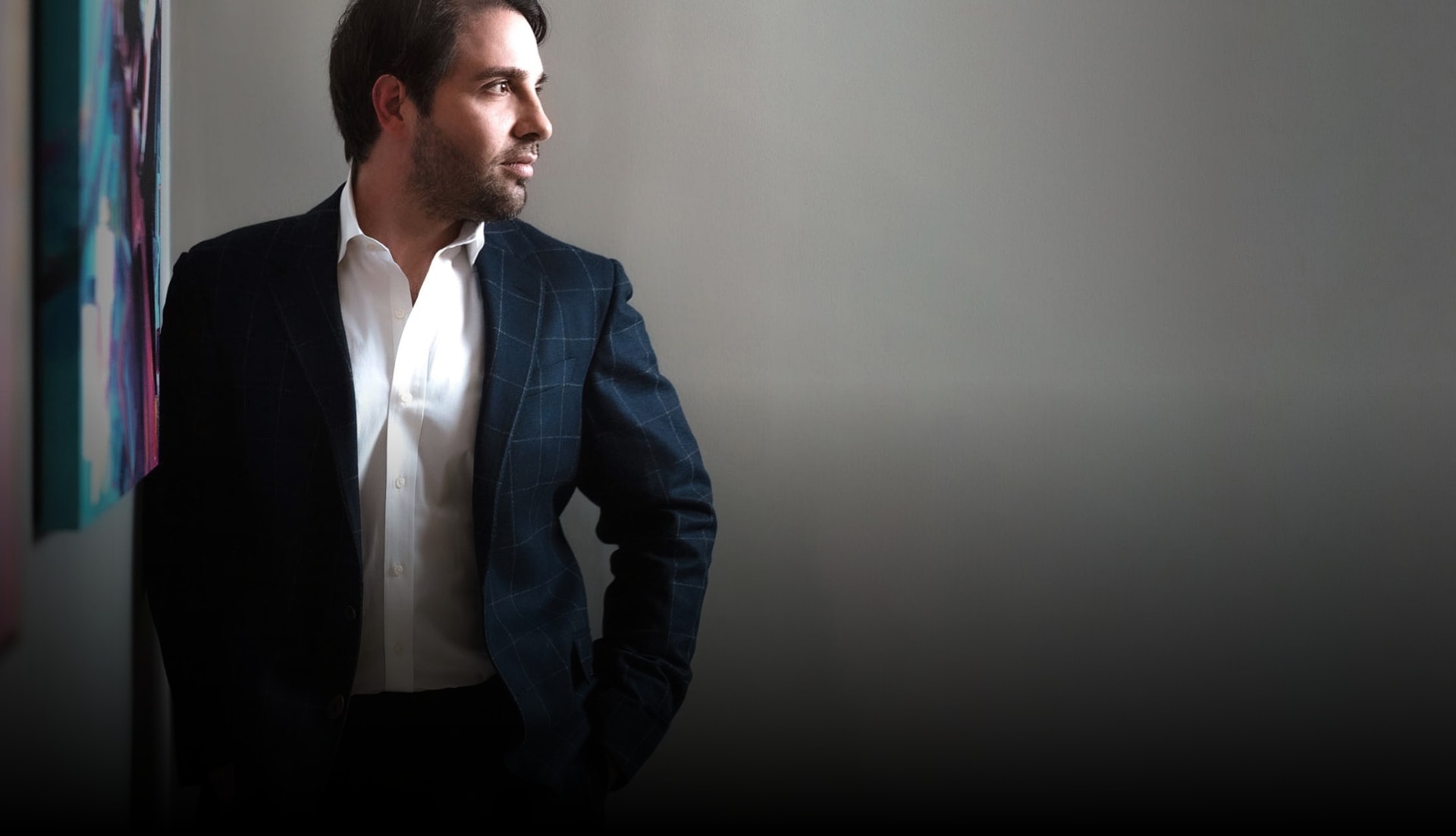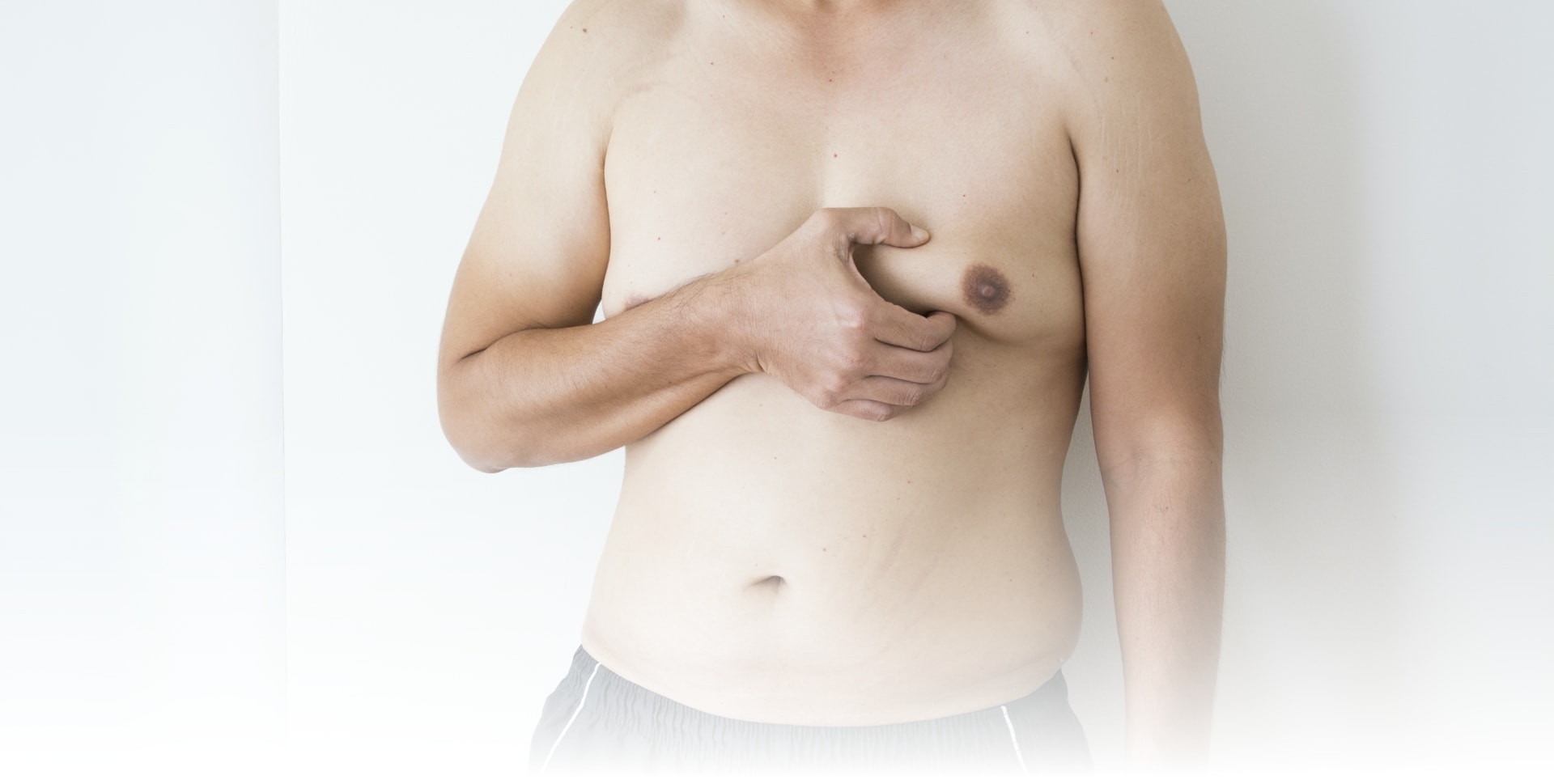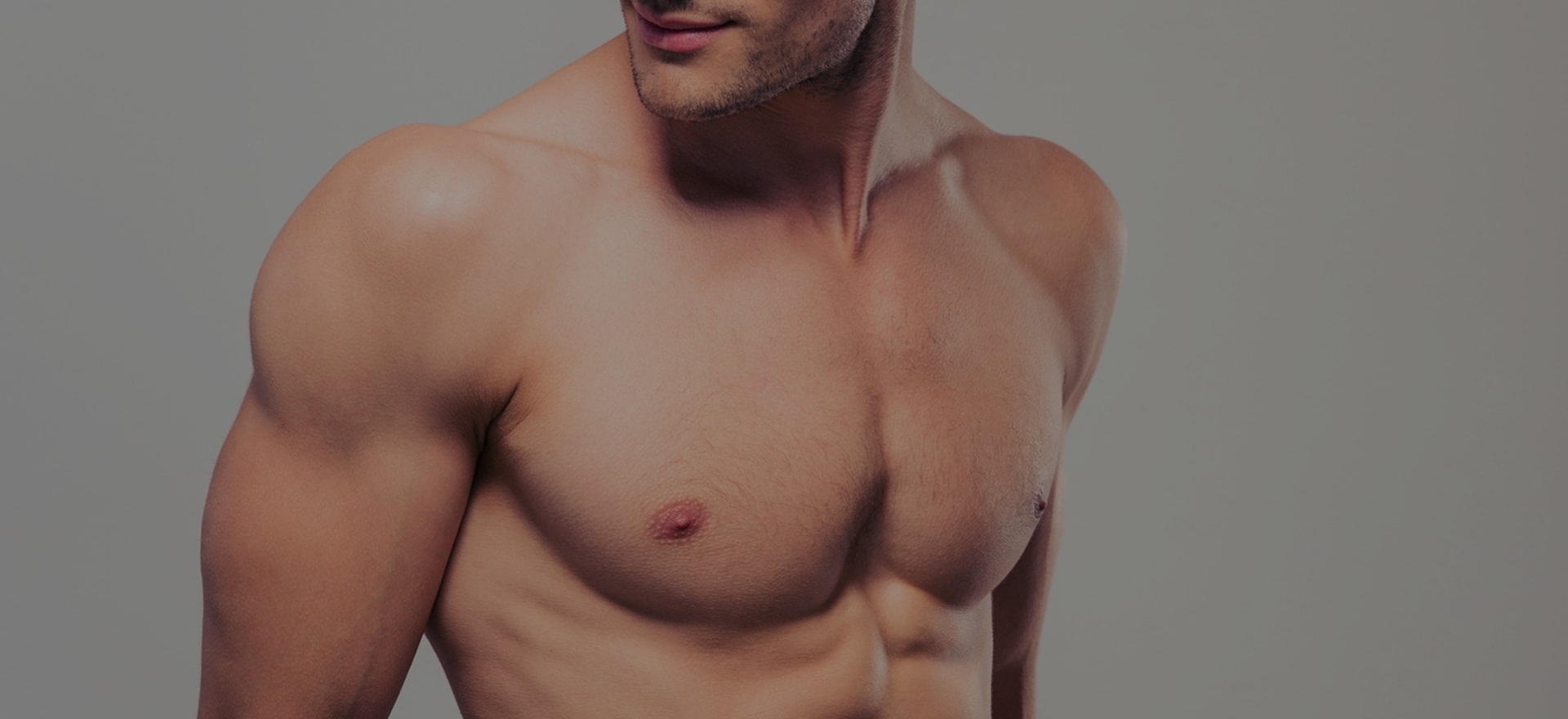
Washington DC Region
Tysons Corner, Virginia | Columbia, Maryland







Dr. Khalifeh is passionate about Gynecomastia Surgery, and passion is what drives his excellence. After treating over one thousand men with gynecomastia, he is now considered one of the top gynecomastia doctors on the east coast and has patients flying in to seek his expertise. Patients find Dr. Khalifeh to be an approachable, genuine, and straightforward communicator. A consummate perfectionist, Dr. Khalifeh combines over 20 years of experience and artistic touch to bring out the best results in his patients’ results. As a gynecomastia specialist, Dr. Khalifeh performs hundreds of gynecomastia cases every year Dr. Khalifeh cherishes the huge difference that he makes in each and every man’s life with this procedure.
Dr. Khalifeh came to the United States when he was eleven, settling in Baltimore. He graduated Summa Cum Laude and Phi Beta Kappa from the University of Pennsylvania, and earned his medical degree from the Vanderbilt University School of Medicine, where he earned the top spear award in physiology and graduated Alpha Omega Alpha. He then completed his training in Plastic Surgery at the prestigious Johns Hopkins Hospital. He has been recognized as a top plastic surgeon by realself.com, Northern Virginia Magazine, Arlington Magazine, amongst other publications. In addition to his private practice, he serves in the Navy Reserves as a plastic surgeon, and was deployed in 2019 to help with the Navy’s Covid-19 efforts.
In his personal life, Dr. Khalifeh enjoys being a dad to his young daughters and outdoor activities including hiking and skiing.




Males are born with some breast tissue, as a result of the common embryologic development in the womb that men and women share. In some men, hormonal or medicinal stimuli can then cause that preexisting native tissue to develop further than normal, and reach a shape or size that becomes psychologically disturbing to that person. In most, this occurs during the hormonal changes at puberty, however it is not uncommon to have other reasons later in life that lead to the same process. At that point, the patient is diagnosed with Gynecomastia, which is the presence of excess gland tissue in a male.

Men and women share many common embryological features, and every man is born with breast tissue and nipples. The breast tissue, while present, typically does not develop significantly. When it does develop, causing gynecomastia, it is usually triggered by hormonal changes and imbalances. The major hormonal players, no surprise, are testosterone, which inhibits the breast from growing, and estrogen, which stimulates the breasts to grow. In reality the body’s hormonal milieu is more complicated than just these two hormones, but for simplicity’s sake, any condition that blocks or reduces the effect of testosterone or augments the amount or effect of estrogen can lead to breast growth.
In the vast majority of the cases that present, no single or identifying cause can be found. We then call this idiopathic gynecomastia.
Other times, the changes in hormones can be caused by some prescription medications such as finasteride (Propecia) and spironolactone, and of course, anabolic steroids, sometimes prescribed but often used by bodybuilders to enhance muscle build up. The list is long as many other agents can also trigger hormonal imbalances, but these are some of the main ones.
Illicit drugs, especially marajiuana is often blamed for gynecomastia development, although the amounts smoked have to be substantial. Medical conditions such as Klinefelter syndrome or pituitary insufficiency sometimes have too be also ruled out.
Whatever the root cause of gynecomastia is, the mainstay of treatment remains surgical. By the time the patient seeks treatment, the condition has been long enough that a medical treatment is no longer effective. Plus, many feel that the risk of surgery is less than the risk of lifelong medical treatment with hormones.

A commonly asked question, but I personally feel that there is too much emphasis on this question. There is no absolutely true pseudogynecomastia as all men naturally have some breast glandular tissue. I want you to think of the breast as a container full of both fat and gland, but there is a continuum of the proportion between gland tissue and fat tissue. During surgery, I see that surgically when I bisect the specimen at the end of the removal. Before surgery, I can palpate the difference and notice that pseudogynecomastia is softer and more uniform in feeling, whereas truer gynecomastia is harder and the hardness varies, being greatest right under the nipple.
On one end of the continuum is a hard glandular blob of tissue that I feel gets close to being 100% glandular. When I divide it in half, all I see is white hard tissue, with very little fat interspersed. On the other hand is a chest area filled with fat and fibrous stroma much ackin to other areas of the body, except for a small collection of glandular tissue the areola, and we call that pseudogynecomastia.
Both spectrum of the conditions bother patients, and the treatment is still surgical but in terms of treatment and response to nonsurgical options, here are some observations, which may or may not be self-evident:
a) Pseudogynecomastia equals more fat, almost exclusively found in overweight men, and much more responsive to diet and exercise and weight loss since those target the fat cells all over the body
b) Pseudogynecomastia treated with a lot of lipo, but I do recommend a small incision to extract that small 10% of gland tissue
c) Pseudogynecomastia develops later in life with weight gain, or remains afte weight loss in someone that was previously obese
Either way, even in cases of “pseudogynecomastia” I still recommend both lipo and excision, since excision takes a few minutes only. Otherwise the 90% soft tissue is removed, and it will leave a small hard ball under the nipple that I could have removed with a 30 more minutes of work and only a slightly larger incision.
I hope this answers your question. If you are closer on the spectrum of true gynecomastia, then surgery is your best option. If you are overweight and your breast tissue is composed of a lot of fat, you can certainly get rid of that tissue if you lose weight, plus you will look great in other portions of your body too.
As you do your research, you will note many classification systems for gynecomastia, and I will include one here that is commonly used. The grading system is “academic” in nature, and does not necessarily reflect how you feel about your chest. As a surgeon, I am not looking at grade, but at what aspects of the chest that I need to address. How much tissue is there? Is the tissue soft (fatty) or hard (glandular). Where are the nipples, and do they need reduction or lifting? What is the nature of the skin quality and excess, and do I need to resect any?
Small hardnodule of tissue that is located right below the areola. I often refer to this as a “puffy nipple”. The nipple often “puffs” out in heat, and retracts in cold or when touched/pinched.
Tissue is spread all over the chest, although not surpassing the chest borders. The skin tone is acceptable, although there may be some descent of the breast. The treatment consists of a combination of liposuction and gland excision.
Tissue exceeds the borders of the chest to also go into the axilla and lateral chest. There is increasing skin excess.
There is enlargement of breast with significant excess of skin and increasing feminization. Skin excision via a double incision technique is often necessary.

A well developed attractive chest is a hallmark of a man that works out regularly. So it’s not surprising that the reverse question is asked often: are there any exercises that reverse gynecomastia?
I always encourage working out. When it comes to physique, developing stamina and muscles always adds to attractiveness. However as far as gyno is concerned, the answer to this inquiry often depends on the fat content of the underlying tissue.
Exercise is an effective treatment option for many individuals with gynecomastia containing fat tissue (even those with a mixed fat-gland component). The fat will shrink. Pushups, bench press, swimming, etc. can all reduce fat in the breasts while augmenting and sharpening the pecs.
What is not treatable via exercise is the glandular component. That tissue, once solidified, is usually resistant to all treatment modalities except a surgeon’s scalpel.
The short answer to the question above is no. Liposuction alone is not recommended. Remember every man (including pseudo gynecomastia) has glandular tissue form during embryology, which may develop further during puberty and complete regression is not likely. Now as I always say, if you have glandular tissue, it doesn’t mean you need it removed. However if you do choose to be flatter, I do recommend you get both excision and lipo. This is borne out of several observations over the years.
A) Patient satisfaction is much higher when you get glands excised compared to those that have glands removed.
B) Leaving the gland, which is normally cushioned by the fat, creates a harder lump underneath the nipple which you will feel and may be bothersome.
c) Finally, we’re already doing surgery if we are doing lipo! Yes The additional surgery time, risk, and small scar is definitely worth it for you to get an excision as well.

In an ideal setting any gynecomastia surgery will be to get you a flat chest, avoid too much scarring, avoid skin overhang, and correct nipple position issues and sizes.
To get to a flat chest, direct gland excision is the mainstay, often combined with a certain amount of lipo. The amount of lipo correlated with the amount of excess fat both in the breast and in the lateral chest and axilla. For example in the subset we term “puffy nipple”, we rely almost exclusively on the gland excision, whereas in the subset we refer to as “pseudogynecomastia” we rely mostly on the liposuction part of the case.
The least visible scar is on the inferior aspect of the nipple-Areola. The vast majority of my surgical cases (80%) involve me working through the lower third of the nipple to extract the fat and gland, leaving very little scarring.
Once you have skin excess or enlarged/malpositioned nipples, I will have to discuss with you the option of doing additional maneuvers to address those issues. Those options include removing an ellipse of skin (downside is a chest scar) or removing some skin around the nipple and changing the size /position of the nipple (downside is a scar all round the nipple). These maneuvers become more needed as the grade in severity of gynecomastia progresses.
Finally, a word on anesthesia. I perform the vast majority of cases (90%) in an office setting using local anesthesia with mild oral sedation. In some cases, due to either extent of planned surgery or patient preference, the surgery is performed under general anesthesia in a hospital setting.




Whenever I get a teenager whose parents are bringing him in for his gynecomastia surgery, I make it a point to tell the kid how lucky he is to have parents that are taking his concerns seriously. This is because cost is the one of the impediments to gyno surgery for many young men. We attempt to make our fees accessible to many, while still maintaining our ability to specialize and excel at this procedure.We are happy to share our prices online, in one of two ways. The first way is to fill out a price request form, and we will send you our current pricing “menu” that describes pricing based on the generalized appearance of a patient.

